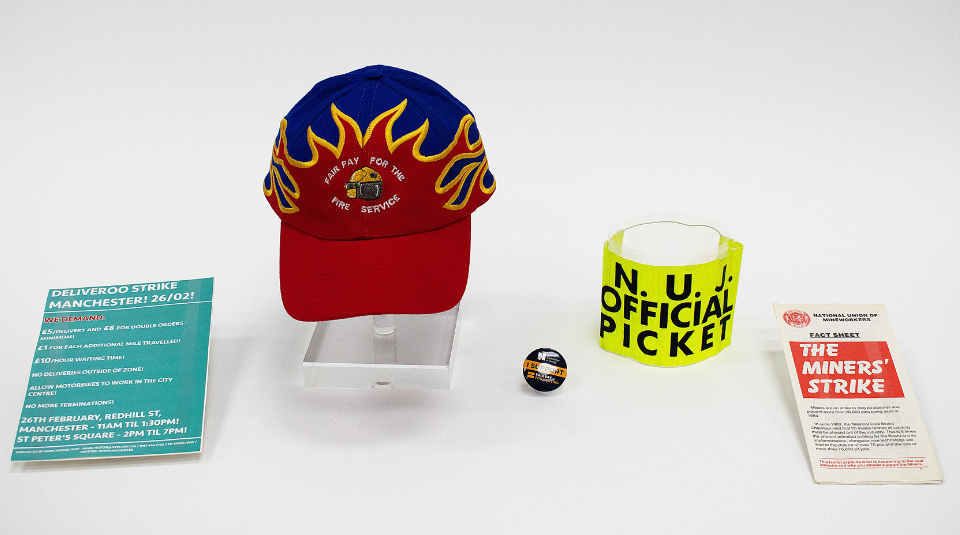
After a year marked by ongoing strike action, People’s History Museum’s (PHM) Collections Officers Kayleigh Crawford and Shivaya Prasad have uncovered strike related objects in PHM’s collection. These objects, collected from 40 years of picket lines, represent major UK strikes of the 1980s and 1990s, with more recent acquisitions illustrating contemporary strike action.
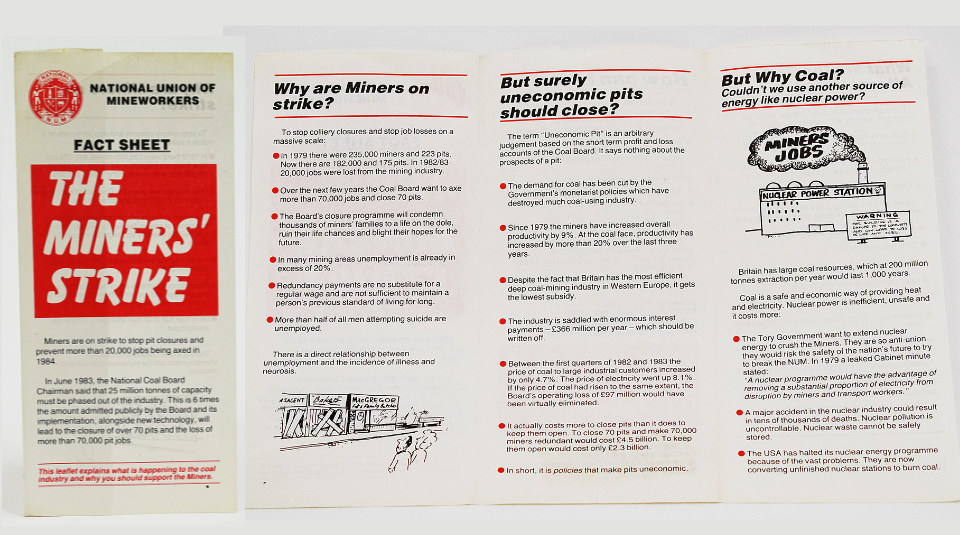
This leaflet was issued by the National Union of Mineworkers (NUM) during the 1984 to 1985 Miners’ Strike, a major dispute within the British coal industry over attempted colliery closures. The fact sheet tackles common myths that were circulated during the strike in an easy to read format. It would have been distributed within the union and across the UK to help promote the strike and win popular support.
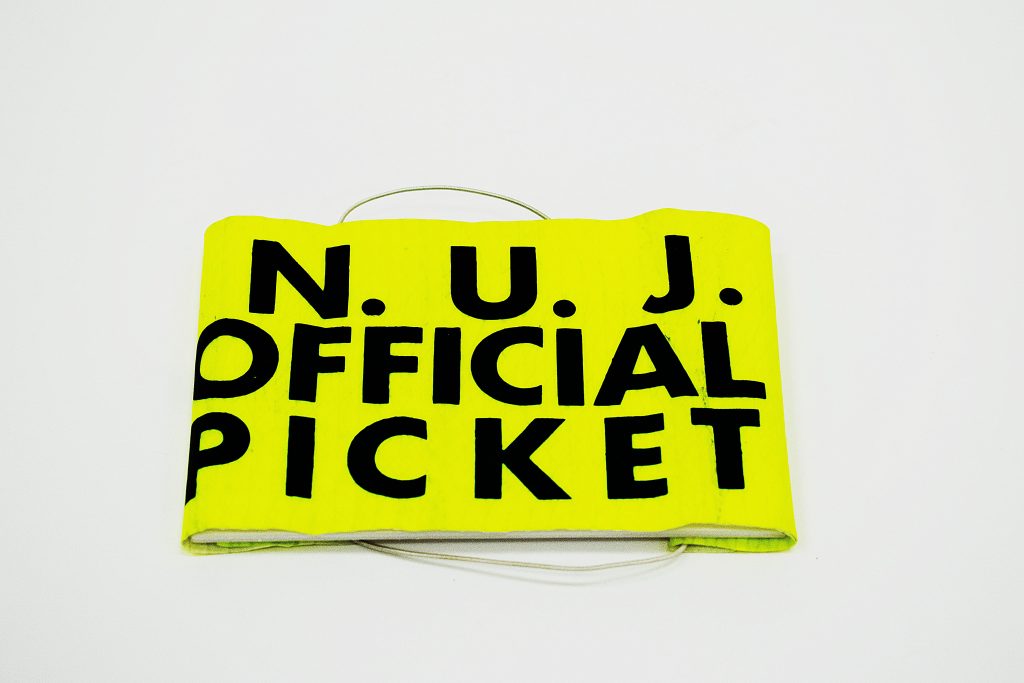
This armband was used during the Wapping dispute of 1986, where print workers withdrew their labour to fight mass dismissals and redundancies, which were caused by new developments in newspaper printing, technology, and the new Wapping printing plant. The new technology meant that print union workers were unfairly dismissed. Print unions attempted to block the distribution of The Sunday Times, as well as other newspapers printed by Rupert Murdoch’s publishing company News Corp after the production changes. This armband was worn by a member of the union designated as the picket supervisor; the person responsible for overseeing the picket during the strike.
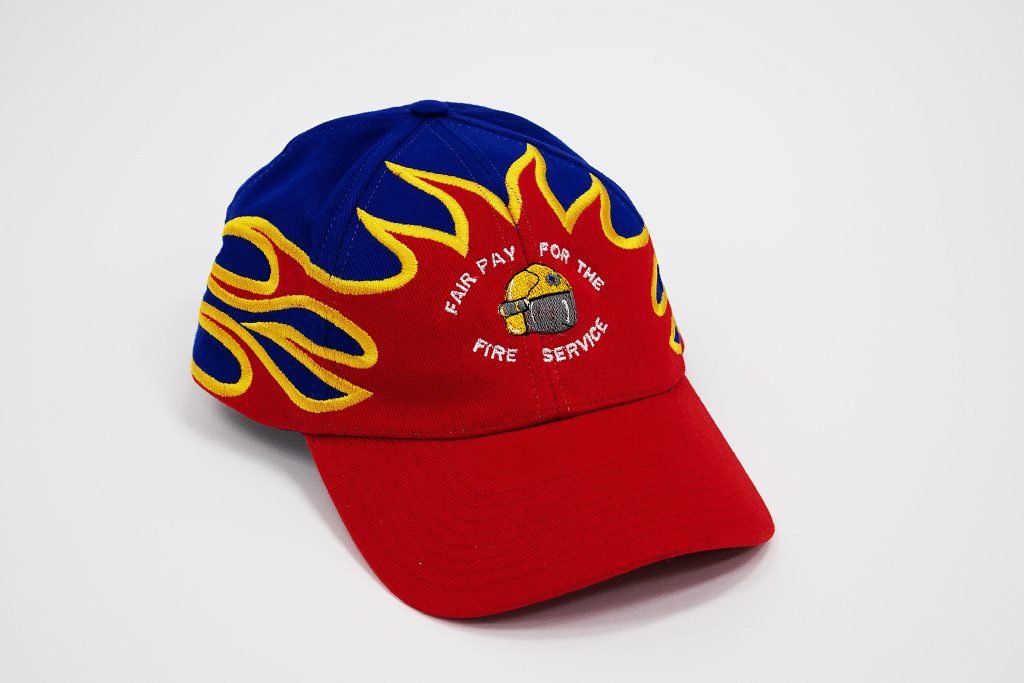
This cap commemorates the fire service strike which occurred in late 2002 to early 2003, where fire service workers went on strike to demand better pay. Months of negotiations between the Fire Brigades Union (FBU) and negotiators for the local authority employers were unsuccessful until in June 2003 an agreement was reached with a pay deal of a 16% rise over three years. The strike was led by FBU General Secretary Andy Gilchrist. This cap was given to the Chaplain of Warrington for his support during the strike, which he then donated to the museum in 2016.
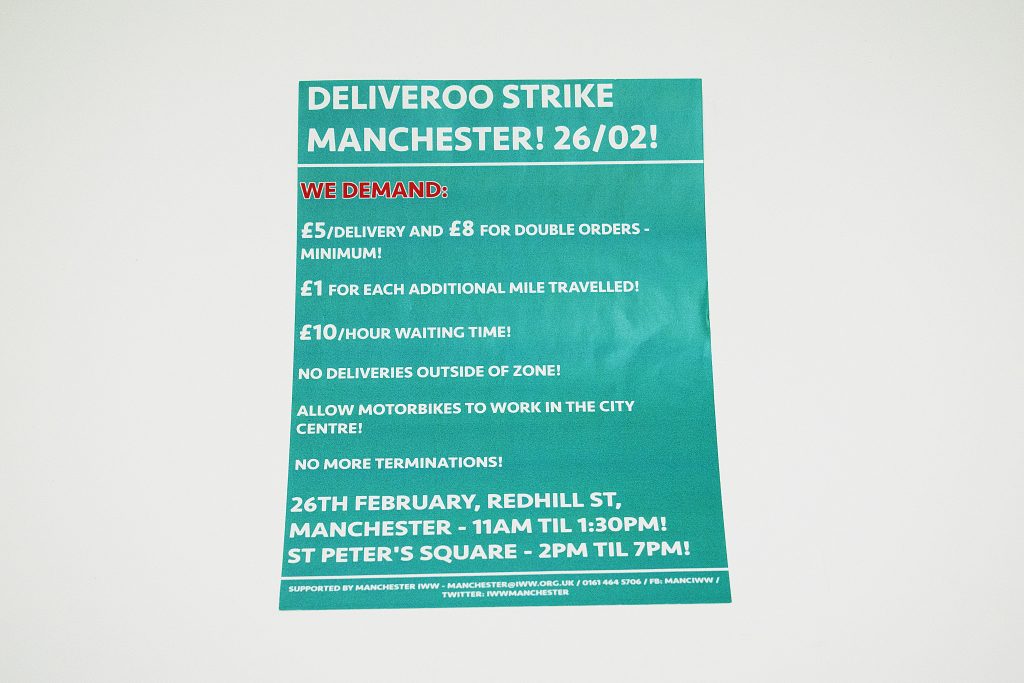
This leaflet advertises a strike for Deliveroo workers in Manchester. The strike was in response to low pay, poor working conditions, and exploitative working practices. Deliveroo workers have also been racially profiled and targeted by the police for immigration checks, under the guise of checking insurance documents.
These leaflets were handed out to people in the streets outside popular takeaways and restaurants. The strike was supported by the International Workers of the World Union and is significant because it is one of the first major examples of unions adapting to new forms of work, such as the gig economy – which is a labour market utilising short term, temporary contracts and freelancing, usually through digital platforms. In 2022 Deliveroo signed an agreement with GMB to acknowledge it as the official union for Deliveroo riders, which saw the introduction of sick pay, insurance, and the right to representation.
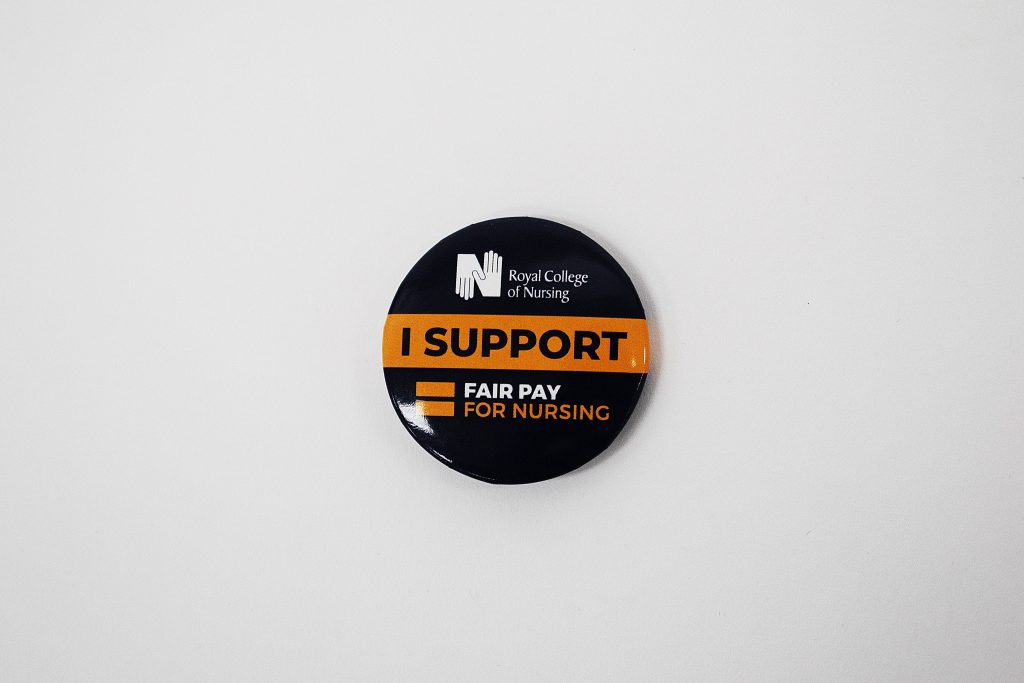
This badge was made for the January 2023 nurses’ strike led by the Royal College of Nursing (RCN). This strike saw health workers picket their workplaces in one of the biggest health worker strikes the UK has ever seen. This badge was given out to passers-by at the picket line in front of Warrington Hospital. The RCN launched their Fair Pay for Nursing campaign in 2020.
Strikes have always been a key tactic of the labour movement in Britain. From as early as 1846 workers have engaged in practices of withholding their labour to bargain for better wages and working conditions. PHM has a large collection of objects related to strike action, many of which are on display in our main galleries and cover important periods of labour history such as the Tolpuddle Martyrs, the 1926 general strike, the Grunwick strike, and the Winter of Discontent in the late 1970s.
There has been a historic number of strikes in recent years. 2019 saw the birth of the Youth Strike 4 Climate movement, whilst 2020 marked the first ever Deliveroo strike in Manchester. In 2022, the first Amazon workers’ strike in the UK took place in Coventry. 2023 has so far been a landmark year for strike action with civil servants, teachers, train drivers, nurses, university staff, paramedics, and others taking collective action to demand better pay and conditions. Some common factors that explain the recent rise in strike action are the cost of living crisis, wages not rising in line with inflation, poor working conditions, and insecure contracts.
The objects described in this blog were chosen to showcase the ongoing struggle for workers’ rights and to highlight the continued relevance of the union movement.
PHM’s contemporary collecting policy means we actively seek out material related to the current struggle for equal rights; this includes objects related to current industrial disputes and union campaigns.
Visit the objects described in this blog on display in the Collection Spotlight case in Main Gallery One until March 2024. This display case showcases objects from the museum’s collection that are not on permanent display. The case is changed regularly to share new acquisitions and explore ideas worth fighting for.
Read The sirens last time: an ambulance worker looks back guest blog from former NHS ambulance worker Clare Winter, sharing her memories of the 1989 to 1990 ambulance workers’ dispute. On display in Main Gallery Two are two posters from the Deansgate Ambulance Station, Manchester, with the slogans ‘Support your ambulance staff’ and ‘Support the ambulance crews’.
Join a union: If you’ve been inspired by this blog post and want to join a union yourself, you can use the Trade Union Congress (TUC) website union finder tool.
Keep up to date with PHM’s latest blogs and upcoming events by taking the Radicals quiz to sign up to our regular e-newsletter.